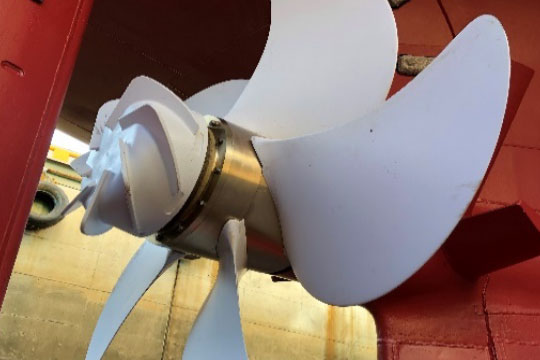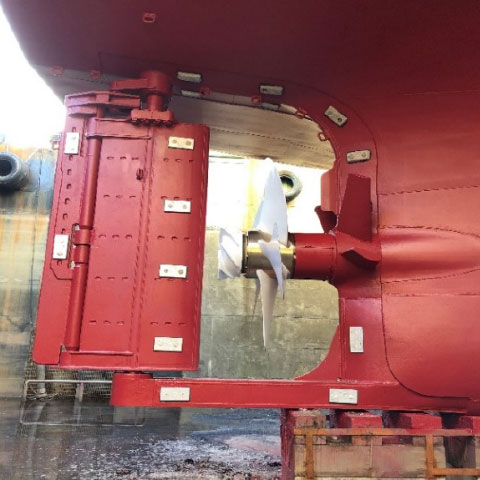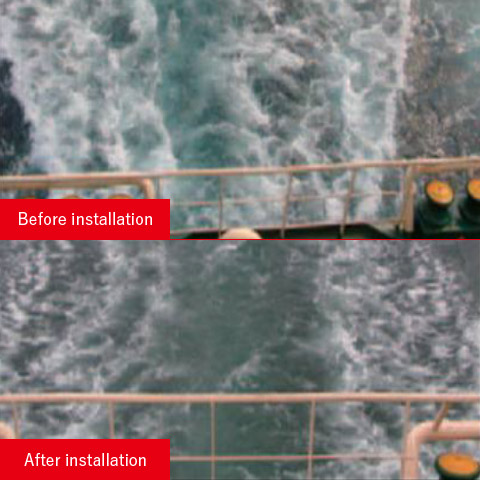Case Study
Marine and Vessels
Carbon fiber reinforced plastics (CFRP) are used in various types of craft, from small boats such as yachts to large ships such as escort ships,
contributing to weight reduction, and increased fuel efficiency and durability.
Here we introduce a case study of application of a CFRP propeller.

Propeller:
CFRP propeller achieves high fuel efficiency and improved comfort.
In the past, copper alloys were the main materials used for propellers (screws) for ships.
By replacing the propeller blade material with carbon fiber reinforced plastics (CFRP), we have achieved weight reduction, high fuel efficiency, and reduced vibration. In addition, CFRP propellers are installed on ships owned by Mitsubishi Chemical Logistics Corporation to achieve environmentally friendly transportation.
4% reduction in fuel consumption during ship transport (according to Mitsubishi Chemical Logistics Corporation)
- Carbon fiber reinforced plastics (CFRP) are lighter and stronger than copper alloys, contributing to increased propeller weight diameter.
- The blade is designed to be harder at the base and softer at the tip, to reduce load at the time of sudden changes such as sudden starts and rough seas.
- Improves propulsion performance by suppressing generation of vacuum waves (cavitation) during navigation.
Carbon fiber reinforced plastics (CFRP) have anisotropic performance based on the orientation of the carbon fibers, and offers greater design freedom than copper alloys and other metallic materials. Therefore, if the shape of the blades is designed to match the flow, overloading at the time of sudden starts and rough seas can be reduced. In addition, it can suppress vacuum waves (cavitation) that can damage propellers and hulls.
Carbon fiber reinforced plastics (CFRP) have approximately 20% the specific gravity of copper alloys, enabling very lightweight propellers with the same performance. Not only does this facilitate installation, it also reduces the load on the bearing by reducing the moment of inertia. The light weight of the material also enables the propeller to have a larger diameter, improving propulsion efficiency.

Improving crew comfort
- Vibration-damping performance: A characteristic of carbon fiber is that vibration subsides more quickly than with the copper alloys in use previously.
- Suppression of propeller singing, and reduction of torsional vibration stress, by vibration-damping performance.
- Lower vibration and noise result in a more comfortable living environment and less stress for the crew.
The facts that carbon fiber reinforced plastics (CFRP) are lighter than copper alloys, the conventional material, and that it absorbs shaking better, mean the effect of reducing vibration and noise in the ship.
In fact, less noise was observed in key areas of the ship, such as the mess hall, wheelhouse, and engine room. In the mess hall in particular, noise used to be a cause of stress for the crew, as it was difficult to hear the sound of the TV while eating, but now they can hear it clearly, which is very much appreciated.
